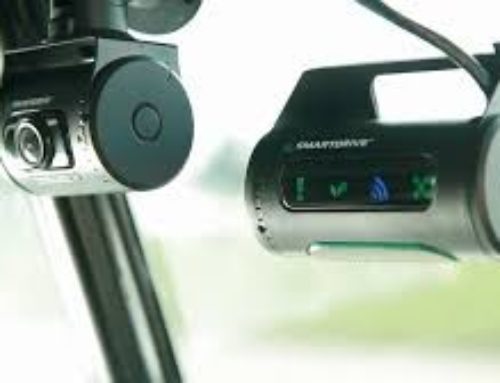The ELD (Electronic Logging Device) mandate deadline of December 18th 2017 is fast approaching. In all my travels and interactions with fleets I would say that most companies of mid to large scale report that they already have ELDs in place or a plan to have them in place by the deadline. What’s left are largely those companies that have a DOT number, but only have a single or handful of trucks in their fleet.
Leading up to this deadline, the topic of Fatigue Management has been coming up a lot. The purpose, after all, of Hours of Service regulations is to provide boundaries and limits on how work is accomplished while a driver is out on the road. This balance of time on duty vs. time off duty is supposed to control for the effects of fatigue, and thus reduce crash and injury frequency. The paper logs of the past, however, were often reported to be flawed because an operator who felt pressure to work longer hours could cheat on the paper log in order to extend his/her work day. With this flaw, no one was ever quite sure that the effects of fatigue were being adequately addressed.
ELDs are meant, in part, to address the exposure of form & manner and other violations which are inherent with paper logs by taking the record of activities away from manual entry from pen to paper over to electronic tracking sources that record the activities of the truck and operator based on electronic location data points through the use of GPS and other technologies. So if the activities of the unit and driver are now linked electronically to location and movement, all the logs will be accurate and we’ll have this whole fatigue issue fixed right? Not so fast.
The thing about fatigue, and the way you manage work/life balance is that your body’s need for rest never really “clocks out”. Even when a driver signs off from their ELD device, climbs out of their truck, gets into their personal car and goes home, the driver’s body time clock is still running. Their commute time to and from work, how late they stay up to attend football games, talent shows and other family activities the night before they return to work, etc. still takes a toll on the driver’s fatigue level. So how can a fleet influence “after hours” activities of their drivers to help them maintain better balance between sleep and wakefulness? Why should a fleet even worry about a driver’s personal time? It’s not their responsibility right?
Today, the FMCSA announced their “Notice and Request for Comments” on driver commuting practices to and from work. They want to “conduct a study on the safety effects of motor carrier operator commutes exceeding 150 minutes.” I believe this survey and data collection from it, will be valuable. Having personally worked in transportation for more than 20 years, I know how hard it is to hire professional, qualified drivers. I’m sure many fleets have had to open up their hiring areas to longer and longer distances from work locations, allow drivers to take their truck home, position units at satellite locations and other practices in order to attract and hire talent.
The risk of not taking into account commute times and other “after hours” activities comes in the form cumulative fatigue. For example, drivers may start their work day in their CMV in some cases after having already driven long miles/hours to get into work. The log record of this driver may show that they are perfectly legal in terms of HOS regulations in the CMV. However, the driver’s actual fatigue level may be very high when you factor in that driving distance. That driver may also have had a lot of commitments to take care of at home prior to coming to work, and may only be operating on very limited sleep. There are also medical issues that can come into play as well, like obstructive sleep apnea, insomnia or other sleep dysfunction. So, whether a fleet feels that they should even worry about a driver’s personal time or not isn’t the the real issue. The issue is that the effects of commuting and other activities leading up to that first day of work can and will take a toll on the driver’s overall fatigue level when they report in and climb behind the wheel of that CMV.
So, what does a fleet leader do to control the effects of fatigue? Here are a few thoughts:
- Take a look at the FMCSA’s guidance on managing fatigue (www.nafmp.com). There are many tips, training resources and other guidance contained here that are absolutely free and are worth looking at.
- Include training about fatigue in your regularized driver training materials and offer it to the driver’s family members as well. The more you educate and involve the driver’s family (on this and any other matter), the better they can help support their driver at home to set them up for the best success when they return to work. Some of the best “safety managers” I have known were driver spouses! My wife has more influence on me and the decisions I make than any manager I’ve ever worked for.
- Review your operations, safety, HR and other policies to ensure you build in protocols for managing fatigue. For example, including a maximum hiring radius around a work location and factoring in the first day’s commute time into the first load assignment of the week can work wonders in how fatigue is managed. Setting a plan with each driver on their first day of work is crucial and increases trust and appreciation from the driver’s family.
- Comprehensive sleep apnea testing, treatment with verified compliance for those drivers who are referred by the CME and/or are determined to be at risk for OSA based on events seen through technology (video) or observation. A study sponsored by the Federal Motor Carrier Safety Administration (FMCSA) and the American Transportation Research Institute (ATRI) found that 28% of drivers have mild to severe sleep apnea. This is a huge population of folks, many of which have no idea they have the condition. So, it’s very important that every fleet leader be proactive in putting a plan together to address screening, and treatment with verified compliance.
When I think about the whole pursuit of “work life balance” I don’t think it as a final end result, but rather a continual process. It’s a moment by moment balancing act…like trying to keep yourself up on a tightrope. Staying in balance requires constant adjustment. I believe that Fatigue Management is no different. The best way to keep the right balance is through planning, education, family involvement and good old fashioned communication.



